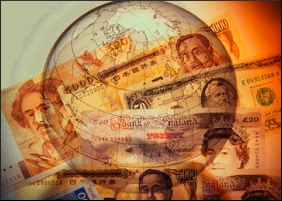|

|
World economy on the precipice of disaster
|
|

|
|
| Top Stories |
 |
|
|
|
Jose Ignacio Ramonet | 17 Sep, 2008
For the first time in modern days, three major economic crises on financial, energy and food fronts have merged together, bringing world economy to the precipice of a disaster.
The truth is that we are facing an economic cataclysm of unprecedented magnitude, whose social effects are just beginning to be felt and will explode with unpredictable savagery in the next many years.
Disaster is never certain and numerology is not exactly a science, but the year 2009 could very well turn out like the grim 1929.
As feared, the financial crisis continues to worsen.
To the problems suffered by some US banking giants such as Bear Stearns, Merrill Lynch and the Citigroup add the recent crisis of Lehman Brothers, the world"s fourth largest bank, which announced June 9 a loss of 1.7 billion euros ($2.4 billion).
Since this is Lehman's first deficit since being listed in the Exchange in 1994, the loss had the effect of an earthquake in a financial America that was already violently traumatized.
Every day there are new reports of banks going under. So far, the most affected entities have admitted losses totaling almost 250 billion euros ($356 billion). And the International Monetary Fund estimates that, to emerge from the disaster, the system will need about 610 billion euros ($869 billion).
The crisis began in the United States in August 2007 with subprime mortgages falling in arrears.
Banking entities no longer lend money. They all mistrust the financial health of their rivals. Despite the massive injections of liquidity made by the major central banks, the drought of money in the market has been unprecedented.
From the financial sphere, the crisis has moved to the entire economic system. Suddenly, the economies of the developed countries have cooled. Europe (particularly Spain) is in full deceleration and the United States is on the brink of a recession.
The harshness of this development is most noticeable in the real estate sector. During the first quarter of 2008, home sales in Spain dropped 29 percent. Nearly two million apartments and homes could not find a buyer. The price of land continues to fall.
And the rise in mortgage interests and the fears of recession plunge the sector into an infernal spiral, with ferocious effects on all fronts of the huge construction industry. All the construction businesses are now in the eye of the hurricane and witness the destruction of tens of thousands of jobs.
From financial crisis we have gone on to a social crisis. And the authoritarian policies emerge again. The European Parliament June 18 approved the infamous "directive of return (of the migrants)" and the Spanish authorities have announced their willingness to arrange for the eviction from Spain of one million foreign workers.
On top of this awful situation comes the third shock in the form of oil, as the price of a barrel of crude rises to about $140. That's an irrational increase (in 1998, a barrel cost less than $10), due mainly to the action of speculators.
Investors flee the real estate bubble and shift colossal sums of money because they are now betting on the price of oil rising to $200 a barrel. Oil is now financialized, with the consequences we see: a formidable rise in the prices at the pumps and explosions of anger on the part of fishermen, truckers, farmers, taxi drivers and all the professionals who are most affected.
In many countries, by staging demonstrations and confrontations, those professionals demand help, subsidies or tax breaks from their governments.
Next comes the food price spiral.
In about 40 countries, the high cost of food has provoked uprisings and general revolts. The summit of the United Nations Food and Agriculture Organization (FAO), held June 5 in Rome could not reach an agreement to relaunch worldwide food production.
Here, too, speculators fleeing from the financial disaster are partly responsible, because they are betting on a high price of future harvests. So even agriculture is being financialized.
This is the balance left by a quarter century of neoliberalism: three intertwined crises.
|
|
|
| |
|
|
|
|
|
|
|
|
|
|
|
|
|
|
| |
| Customs Exchange Rates |
| Currency |
Import |
Export |
US Dollar
|
66.20
|
64.50 |
UK Pound
|
87.50
|
84.65 |
Euro
|
78.25
|
75.65 |
| Japanese
Yen |
58.85 |
56.85 |
| As on 13 Aug, 2022 |
|
|
| Daily Poll |
 |
 |
| PM Modi's recent US visit to redefine India-US bilateral relations |
|
|
|
|
|
| Commented Stories |
 |
|
|
|
|
|
| |
|